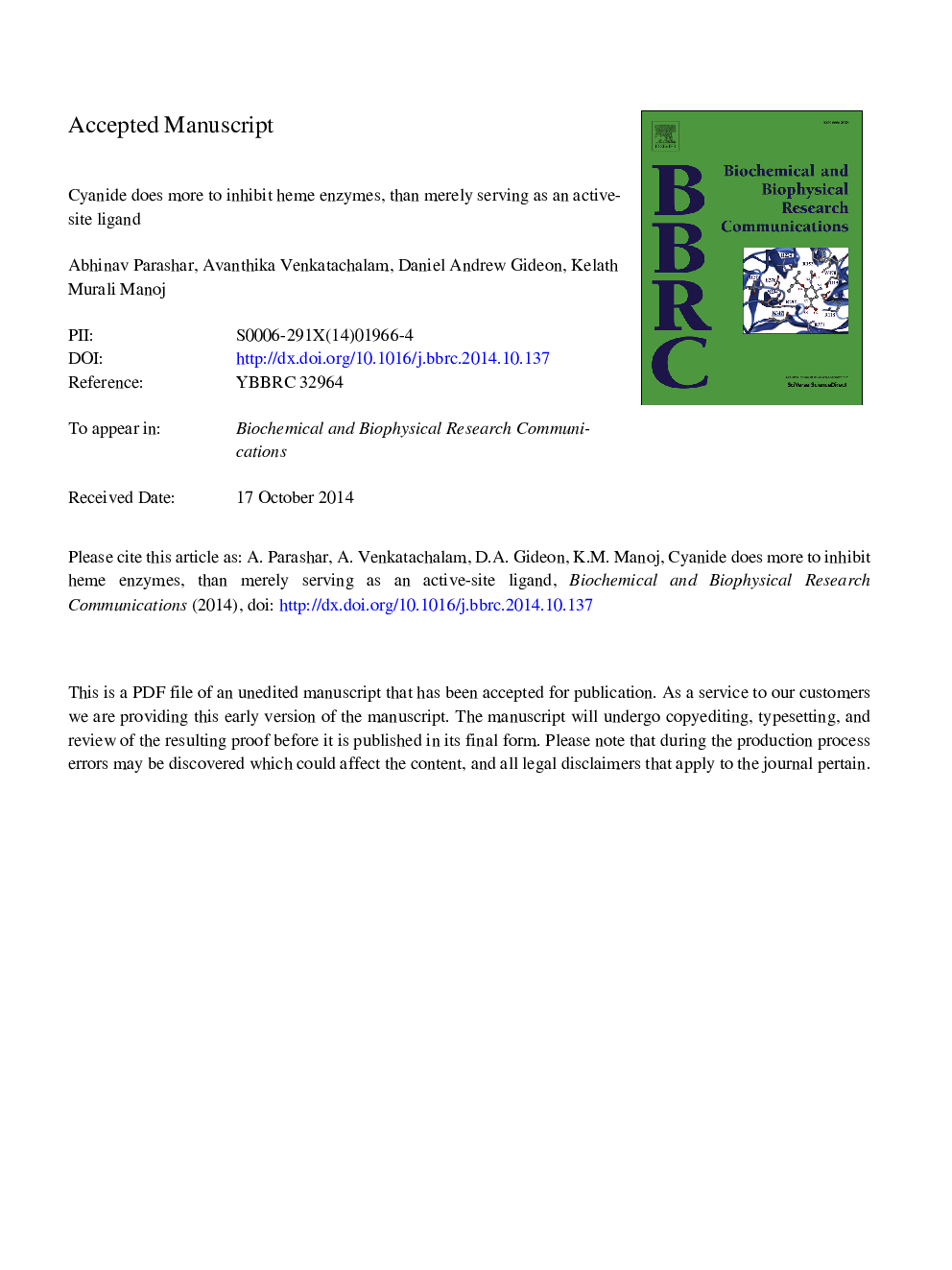| Article ID | Journal | Published Year | Pages | File Type |
|---|---|---|---|---|
| 8296968 | Biochemical and Biophysical Research Communications | 2014 | 18 Pages |
Abstract
The toxicity of cyanide is hitherto attributed to its ability to bind to heme proteins' active site and thereby inhibit their activity. It is shown herein that the long-held interpretation is inadequate to explain several observations in heme-enzyme reaction systems. Generation of cyanide-based diffusible radicals in heme-enzyme reaction milieu could shunt electron transfers (by non-active site processes), and thus be detrimental to the efficiency of oxidative outcomes.
Keywords
Related Topics
Life Sciences
Biochemistry, Genetics and Molecular Biology
Biochemistry
Authors
Abhinav Parashar, Avanthika Venkatachalam, Daniel Andrew Gideon, Kelath Murali Manoj,
